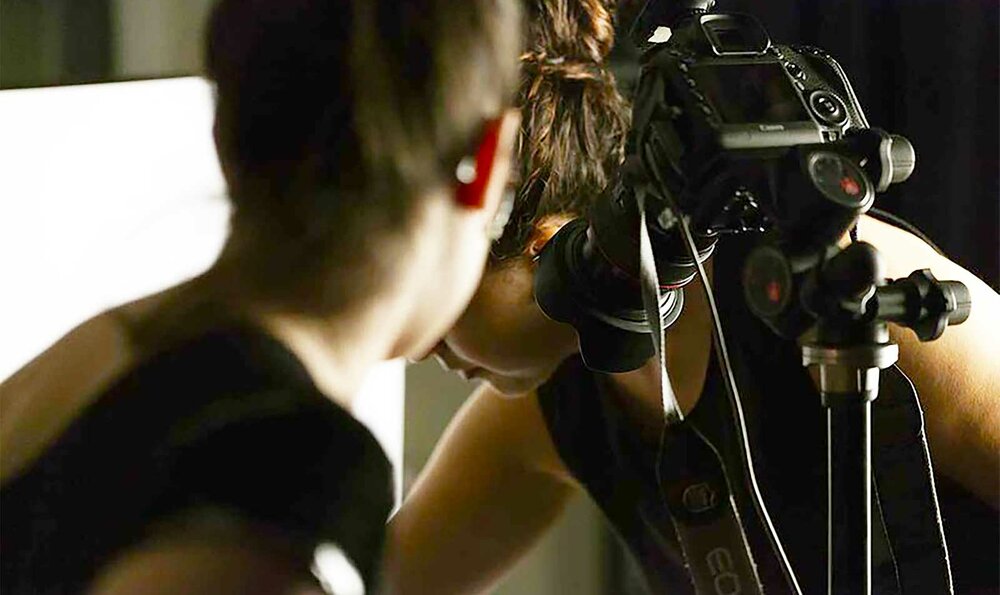Over the years, photography has evolved hand in hand with the advancement of technology, opening up infinite possibilities for capturing images in multiple forms and styles.

Types of photography to become a successful photographer
Date
22 July 2024
In this context, specialisation is increasingly important to succeed in the industry with method, personality, and competence.
Mastery of photographic techniques and in-depth knowledge of equipment are certainly essential elements, but the ability to develop a unique, recognisable style tailored to the specific needs of clients is the real added value.
Fashion photography
Fashion photography is a photographic genre focused on portraying clothing and accessories. It is an art that, to be impactful, requires creativity, aesthetic sense, and the ability to anticipate trends.. This includes a deep understanding of branding and visual presentation, as well as the skill to capture a decisive moment in a glance or movement, which is crucial for a successful shot.
Fashion photographers work together with designers and models to create images that, beyond being representations of reality, tell a story and convey emotion. The complexity of this photographic genre lies particularly in maintaining an original imprint in a highly competitive field. Therefore, quickly adapting to changing styles and developing a strong, unique creative strategy is a necessary requirement to remain competitive.
This genre branches out into different areas including fashion show photography and product photography. To strategically and effectively portray the subject in each of these areas, it is essential to define the target audience and the channel they are intended for, ensuring the audience's needs are met.
Portrait photography
Portrait photography is one of the most intimate forms of photography. Success in this genre is all about the ability to capture the subject’s essence, transforming a fleeting moment, a glance, or an expression into a permanent and evocative image.
To capture the unique nuances of the subject, the portrait photographer must possess deep sensitivity and strong observational skills, as well as the ability to put the model at ease, creating a welcoming and familiar environment. A true professional knows how to enhance each subject by capturing his or her best image, even choosing the most suitable framing for them. In portraiture, there are 7 different framing cuts :
- Full figure: when the subject is shot from head to toe.
- Cowboy shot : when the subject is shot from mid-thigh upwards.
- Half-length: when the subject is framed from above the stomach.
- Half figure: when the subject is shot from the waist upwards.
- Close-up: when the framing is at shoulder height.
- Extreme close-up: when the face is the protagonist of the shot.
- Detail: when only a particular feature like the eyes or mouth is captured.
The eye area, where the gaze has a strong and direct communicative and evocative power, must always be enhanced and accentuated to obtain an intense and deep profile. Steve McCurry is a prime example of how the ability to capture the intensity of a gaze and the depth of an expression can move and leave a lasting impact.
Landscape photography
Landscape photography requires patience and dedication: professionals often wait for hours for the best light and the perfect perspective alignment.
Challenges include choosing the location, composition and dealing with unpredictable weather conditions, which can completely transform a scene. For this reason, the ability to predict and adapt to environmental variations is key.
Photographers such as Ansel Adams elevated this genre of photography to an art form, using natural light to shape and define the landscape with special exposure techniques and filters that set new standards and models within the industry. Aspiring landscape photographers can learn a great deal from these techniques, but also explore new technologies such as aerial photography with drones, which opens up new perspectives and compositions.
Still Life photography
In Still Life photography, inanimate objects take centre stage in artistic compositions. This genre requires special attention to the balance of light and shadow and framing, combined with the ability to transform the simplicity of everyday objects into original and innovative works of art.
It is a type of photo often in demand in the commercial, furniture, fashion, food and e-commerce sectors. For each of these fields, it is essential to plan the shots according to the characteristics of the product, so as to enhance its shape and material. Furthermore, the type of lighting and the right perspective also strongly contribute to a balanced and functional shot.
For the shot to be perfect, it is important to dedicate time to post-production, which involves optimising the image before final delivery. Photoshop and Lightroom are some of the tools used to refine details, correct imperfections, and improve the overall image quality.
Wedding photography
Capturing the moments of a wedding is a task that, in addition to combining reportage and portraiture, requires a special sensitivity to capture genuine and spontaneous emotions.
Wedding photographers must be ready to capture not only the key moments, but also the unexpected and spontaneous ones, so as to preserve the essence of the moment while remaining discreet and unobtrusive. Furthermore, the ability to communicate effectively with the couple and define in advance what their expectations are is essential to the success of the work.
Photographers like Jose Villa have made a career out of refining their ability to document weddings in a natural, romantic style, using natural light and photographic approaches that emphasise the beauty and emotion of the moment without the use of effects and filters.
With its wide range of expressive forms, photography in general offers endless creative possibilities. Whether capturing fashion, a face, a landscape, or a wedding, success depends on the preparation and professional skills developed.
Choosing the training most in line with one's skills and preferences is paramount to excel in the industry. If you are passionate about photography and would like to turn this passion into your job, you can explore the different training courses offered by IED and find the one that suits you best!








